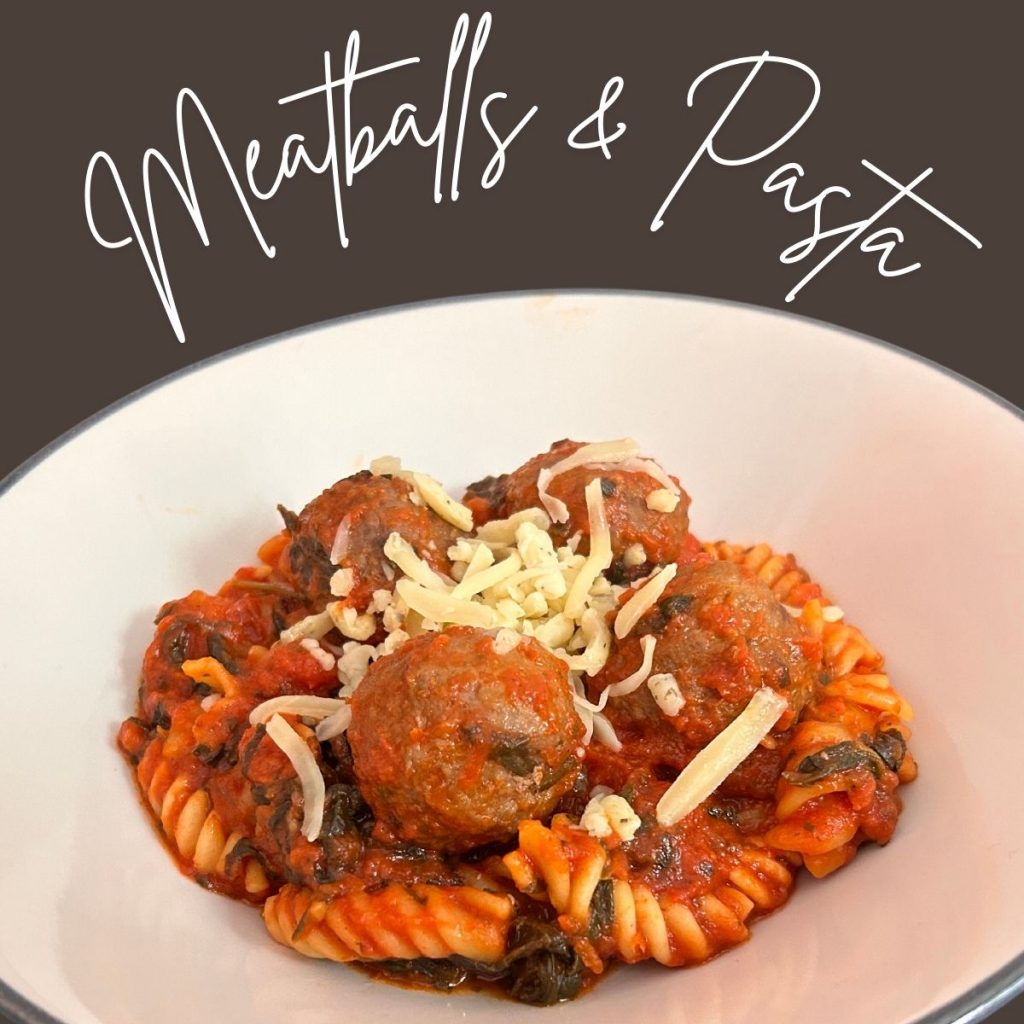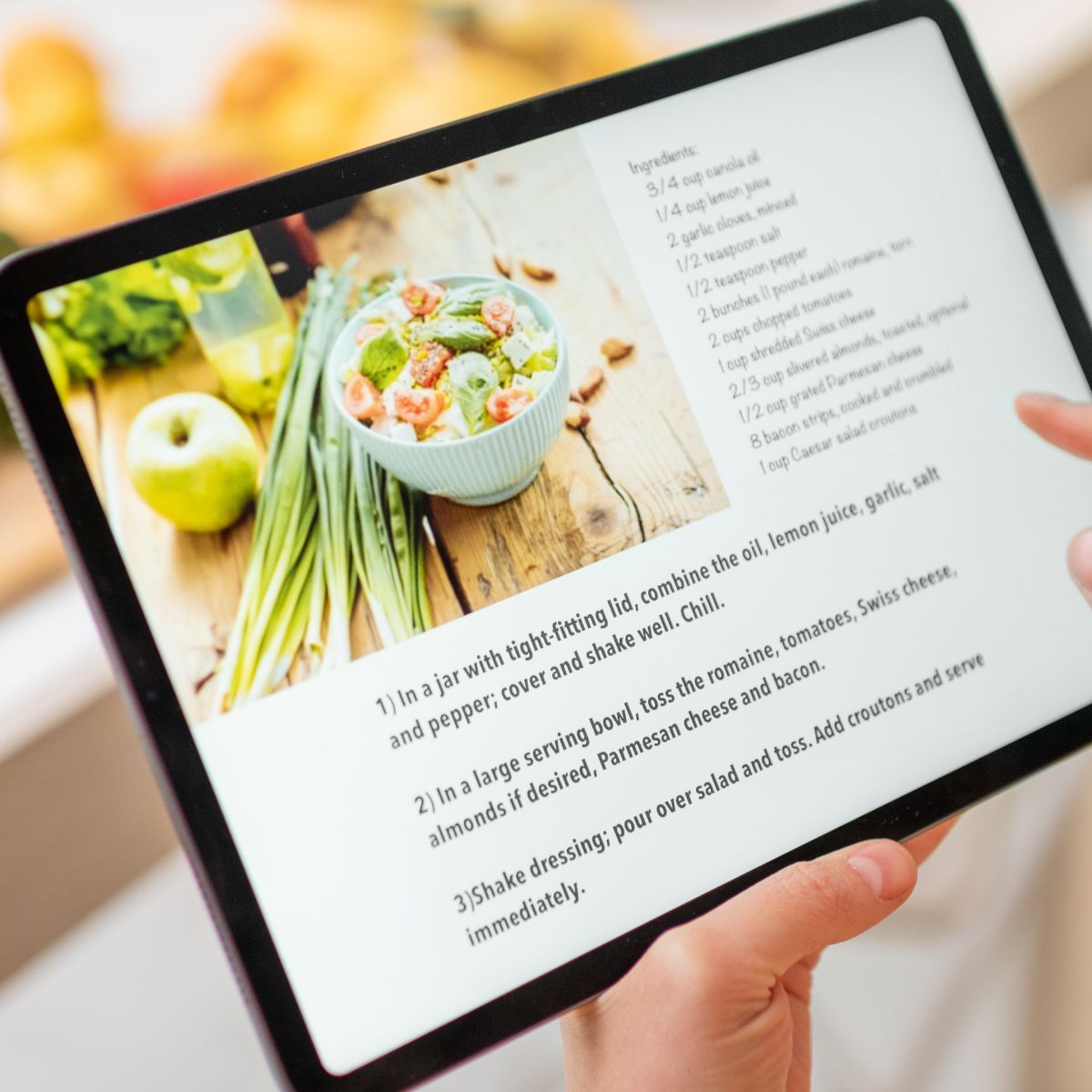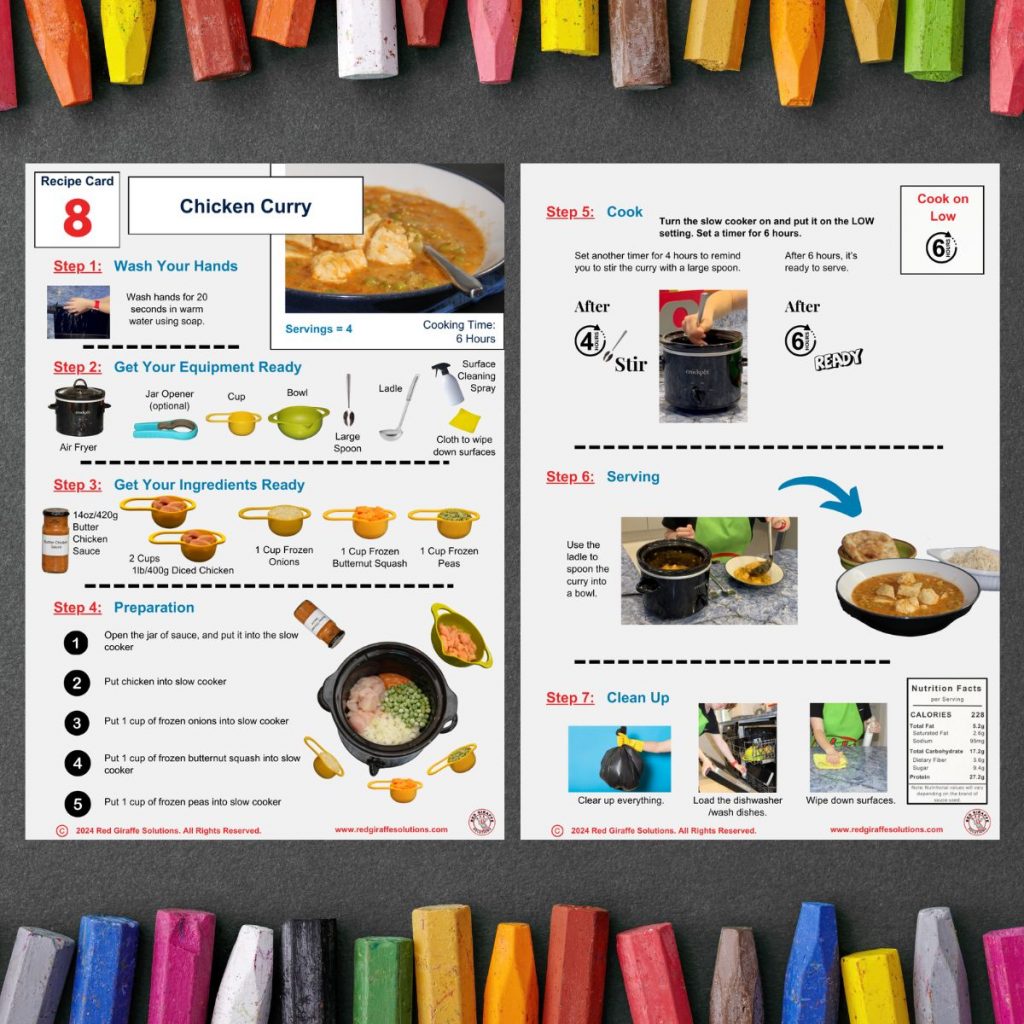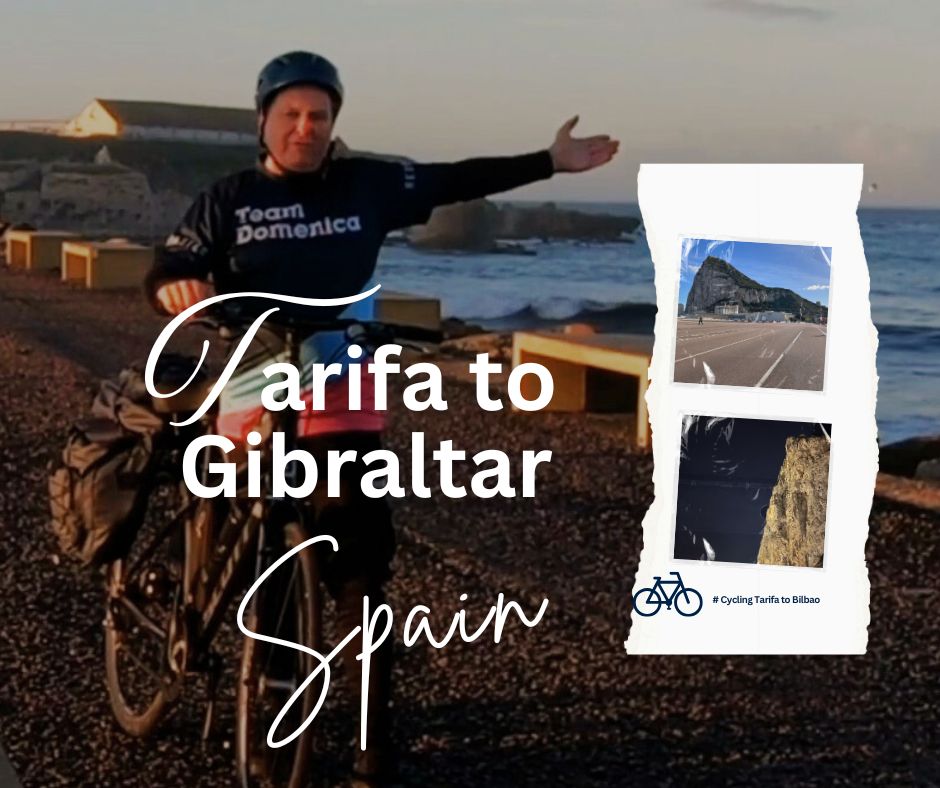Photo by Rossandhelan
The purpose of a recipe is to provide a written guide to make cooking a particular dish easier.
Recipes generally have three components:
- A list of ingredients with the weights/measures for each
- The detailed method to make the dish
- A photo showing how the dish will look
But recipes designed in this way don’t always work for our children, especially if they struggle to read or find the maths of measurement difficult. The challenge then becomes how to find recipes that will enable them to cook without needing support or supervision. This is where recipe cards with pictures – visual recipe cards – come in.
Writing A New Way Forward
Our cooking journey began when I realised traditional cooking techniques and recipes were simply not working for her. We needed to find a new way. This way still needed recipes, because without any recipes she wouldn’t remember how to make more than 1 or 2 dishes. However, these recipes needed to follow a different way of presenting both the ingredients and method.
Over the last 18 months, I’ve been experimenting alongside my daughter re-designing the recipes behind many of our family favourites. She cooks everything from Pasta with Tomato Sauce to Mac n Cheese. From Fish & Fries to Meatballs with Pasta. From Chilli to Curry, along with an assortment of lunch staples.

Photo of Meal Cooked by My Daughter
And over that time, my daughter has gone from needing support and supervision when cooking to confidently cooking independently in a way that she finds safe and simple. I put this down to her the recipe cards with pictures we created. They are easy to follow and, though the ingredients of every recipe might differ, the system always stays the same.
When we started this process the question was, what information should be presented visually? Should it just be the individual recipe, or should it be the whole process? We decided to go with the whole process and leave nothing to chance.
Visual Recipe Cards
The recipe cards with pictures she now uses ended up following a 7-step pattern:
- A reminder to wash hands, an absolute must when handling food, but an easy-to-forget step for any of us.
- Getting the equipment ready. Being organized with equipment before we start cooking avoids stopping halfway through to look for something; ironically slowing down everything at the beginning speeds up the cooking process.
- Getting the ingredients ready. Getting all the ingredients ready makes it less likely ingredients will get forgotten. The key is to measure out in cups or spoons every ingredient needed so the method part of the recipe becomes very simple.
- Then we can start the preparation of the food knowing we have all our equipment out and our ingredients ready.
- Cooking times and any processes during cooking are included on the recipe card.
- Along with serving directions, because for some dishes there are steps needed after the food is cooked.
- And finally the part of cooking most of us least enjoy: the clean up. Often in a family if one person cooks then someone else cleans up, but part of our daughter learning the realities of cooking for yourself is that you also need to do the cleaning up afterwards.
Visual Recipe Card from Independent Cooking Made Easy course
Visual Recipe Cards
At the end of us creating these recipe cards with pictures, I began to understand what a recipe card is for my daughter. It’s not instructions on how to make a meal, because even as just visual recipe cards I think she still would’ve found it hard to follow them.
Instead, recipe cards with pictures are visual a reminder of what to do at every step in making the dish. She has a system learned through repetition and consolidated through practice, so now the recipe cards are simply reminders about what equipment to get out, what ingredients are needed, and to refresh her memory on the process and how long to cook something for.
In Summary
Our recipe cards with pictures still have the same 3 components of a traditional recipe: ingredients, method, and an image, just it’s presented in a more usable system. It just makes sense to get the equipment and ingredients all ready before we start cooking. Including the steps needed before the cooking starts, and the steps needed once cooking is complete act as reminders. And including images of not just the end result but all the other steps in a recipe provides that added visual guide for anyone who prefers their information presented that way.
To find out how to get access to the visual recipe cards we use, check out Independent Cooking Made Easy.
Safe, Simple, System from Independent Cooking Made Easy course





Pingback: My Daughter’s Journey To Cooking For Herself – Graham Caldow